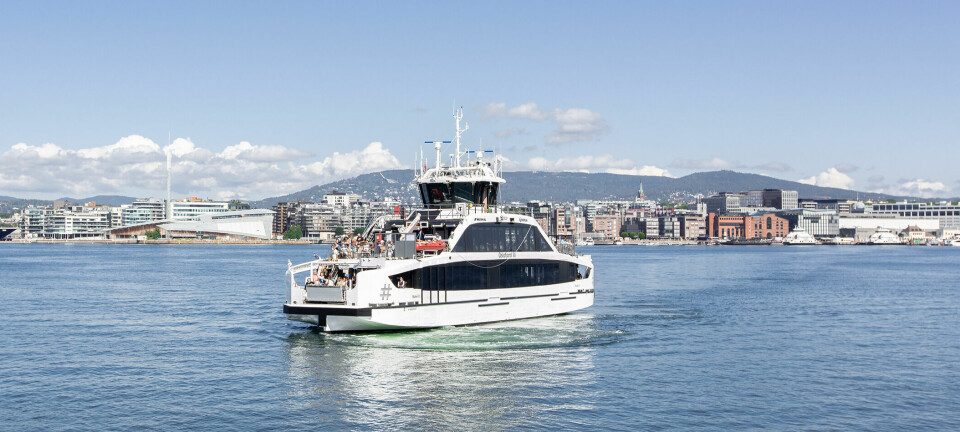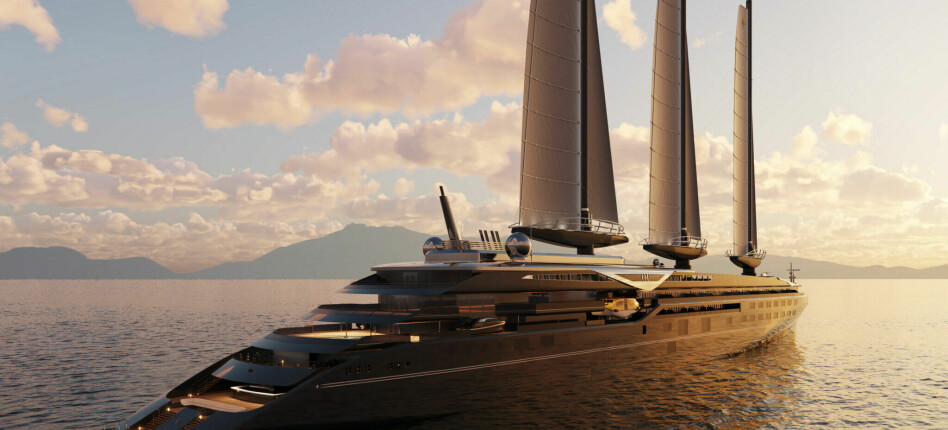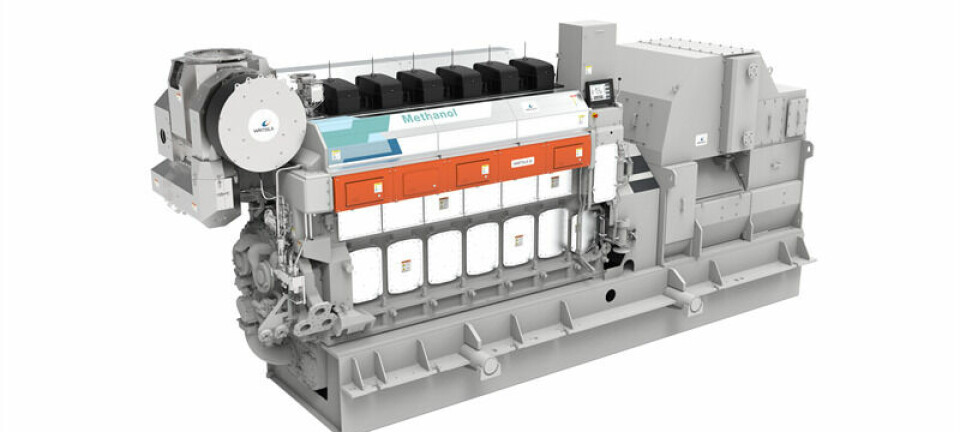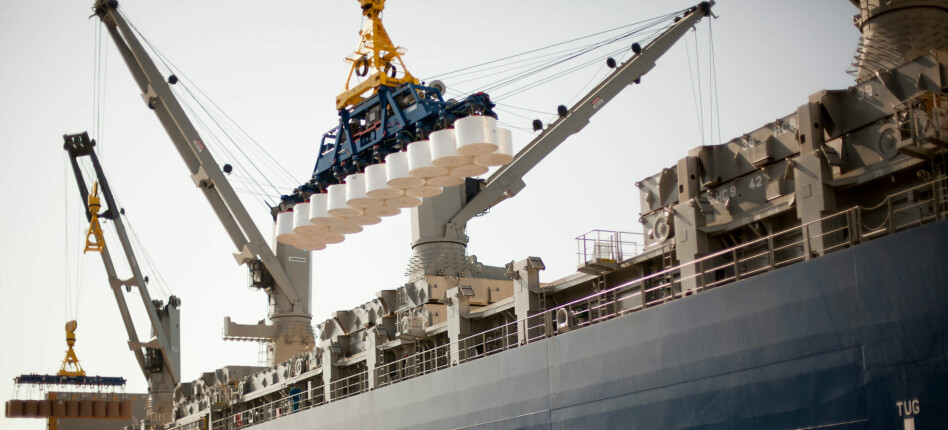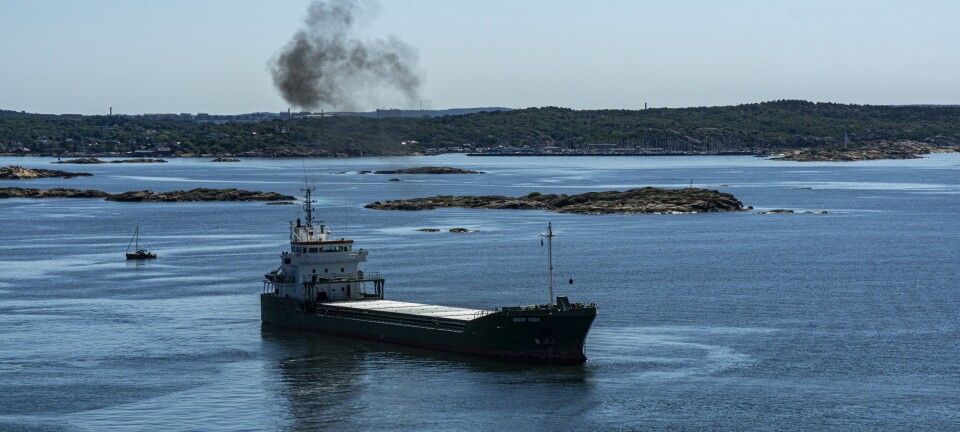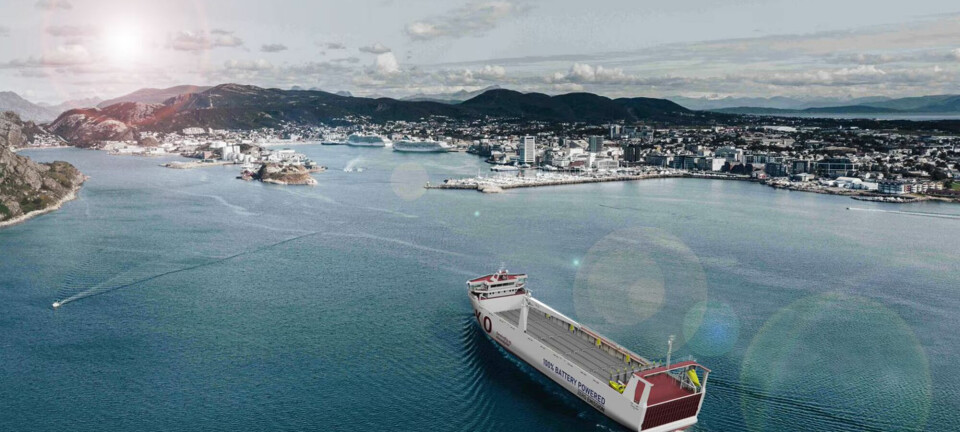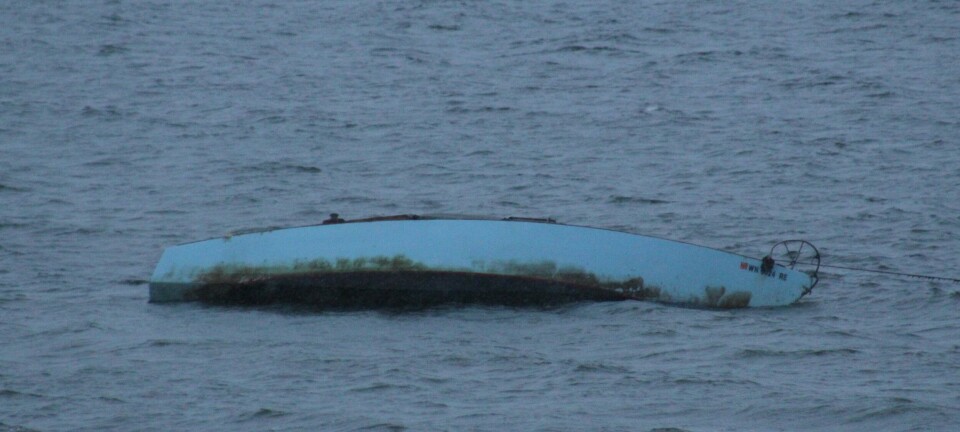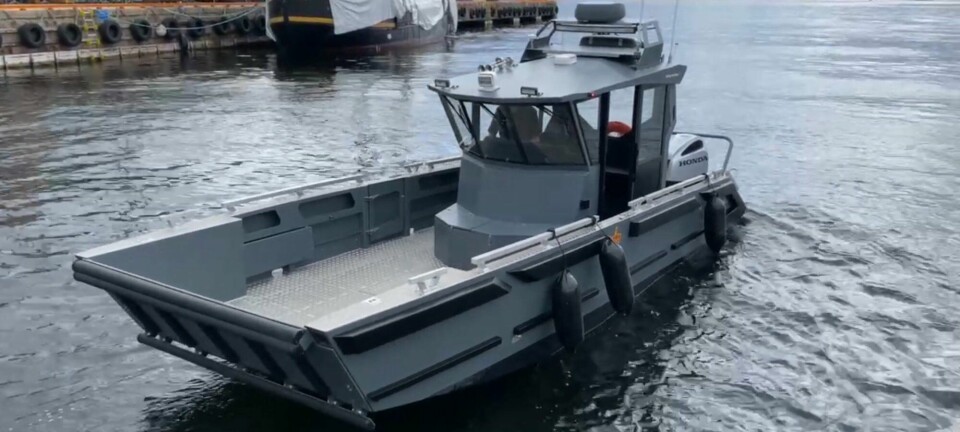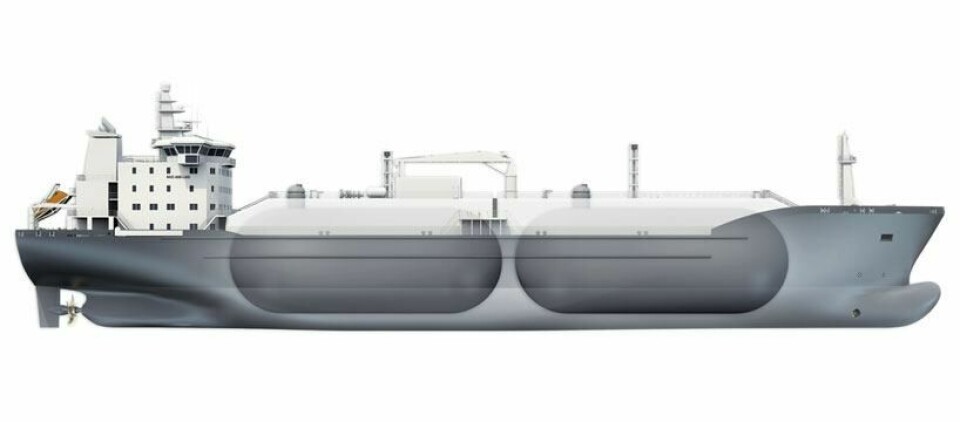
Rolls-Royce LNG carrier design
The Rolls-Royce Marine design NVC-608 LNG is for a 15,000 cbm LNG carrier with cargo system developed in cooperation with Hamworthy.
Denne artikkelen er tre år eller eldre.
In Skipsrevyen no. 6/2009 we presented a FKAB L2 design for LNG. This was tailor-made for regional distribution of Liquefied Natural Gas (LNG). The 16,500 cbm ship is equipped with three cargo tanks, and each tank has two submerged deep well pumps for easy discharging. The discharge capacity is 6 x 300 m3/h.
Rolls-Royce Marine has a design for a similar size vessel named NVC-608 LNG. This vessel is designed for carrying LNG products at about minus 163 degrees. Two cargo tanks of cylindrical configuration with semi-spherical heads is arranged within the cargo area in two cargo holds/void spaces.
The cargo area has double bottom and sides, and is sub-divided into a number of water ballast tanks. Single ship sides might be provided at the forward part of the forward cargo hold. A trunk construction of single hull type is arranged above the cargo tanks.
The propulsion of the vessel is with one single gas engine of medium-speed type, and connected via a reduction gear to a controllable pitch propeller, and arranged for burning boil-off gas and vaporized gas from the cargo tanks.
A shaft generator is connected to the reduction gear (PTO), and the shaft generator is able to work as an electric motor (PTI).
The vessel is to be built according to DNV class ≅1A1, Tanker for Liquefied Gas, ShipType 2G, Type C Cargo Tank, (-163 deg-C, 0.50 t/m3, 2.5 bar g), ICE –1B, E0, TMON, BIS, BWM-T, LCS-DC, CLEAN DESIGN, GAS FUELLED.
Main particulars
The design stipulates length over all 141.5 m, L.b.p.p. 133.5 m, breadth mld. 25.0 m and depth to main deck 14.0 m. The vessel will have design draft of 6.8 m and scantling draft 7.5 m. The deadweight is about 8,000 tonnes. Each tank has a volume of about 7,500 cbm.
Cargo Systems
Two cylindrical cargo tanks with semi-spherical heads will be constructed and installed. The cargo tanks is of Type C independent tanks according to IGC-code. The cargo tank material will be stainless steel, quality AISI 304L, or other cryogenic material
The vessel will be equipped with two submerged electrical driven cargo pumps in each cargo tank, capacity 250 m3/h at 170 lc.
Propulsion
The main engine is gas-duelled with output of 7,000 kW connected to one c.p. propeller with highly skewed blades and diametre of 4800 mm. The design shows one 1000 kW bow thruster, electrically driven of controllable pitch type.
The vessel will have three auxiliary generator sets of 700 kW each and a shaft alternator of approx. 1500 kW. The service speed at design draught 5.8 m will be about 15 knots at 90 per cent MCR and 15 per cent sea margin.
The vessel will have accommodation and equipment for 20 persons in single bed cabins
(All figures to be treated as a subject to change, without further notice, in order to meet owners requirements or application).
Another RRM design
Under the title “LNG-fuelled cargo vessels – a major advance in propulsion” we presented two gas-fuelled Sea-Cargo newbuildings in Skipsrevyen no. 6/2008 designed by Rolls-Royce.
It was at that time mentioned that these would probably be the world’s first cargo vessels to be fuelled solely with liquefied natural gas (LNG), and which would have a simple mechanical drive propulsion system.
We quote from the article: “They are a major breakthrough, both in the application of LNG fuel for merchant vessels, and in the way the simple but elegant Rolls-Royce solution works. An important end result will be a very large reduction in emissions compared with a similar ship using liquid fuel. CO2 emissions will be reduced by about 20 per cent NOx by about 90 per cent, particulates are negligible and sulphur oxide emissions will be zero.
The new 132.8m long Sea-Cargo vessels will be able to carry 5,600 tonnes of cargo on a draught of 6m, with up to 94teu of containers on deck and 1,140 lane-metres of roro capacity.”

